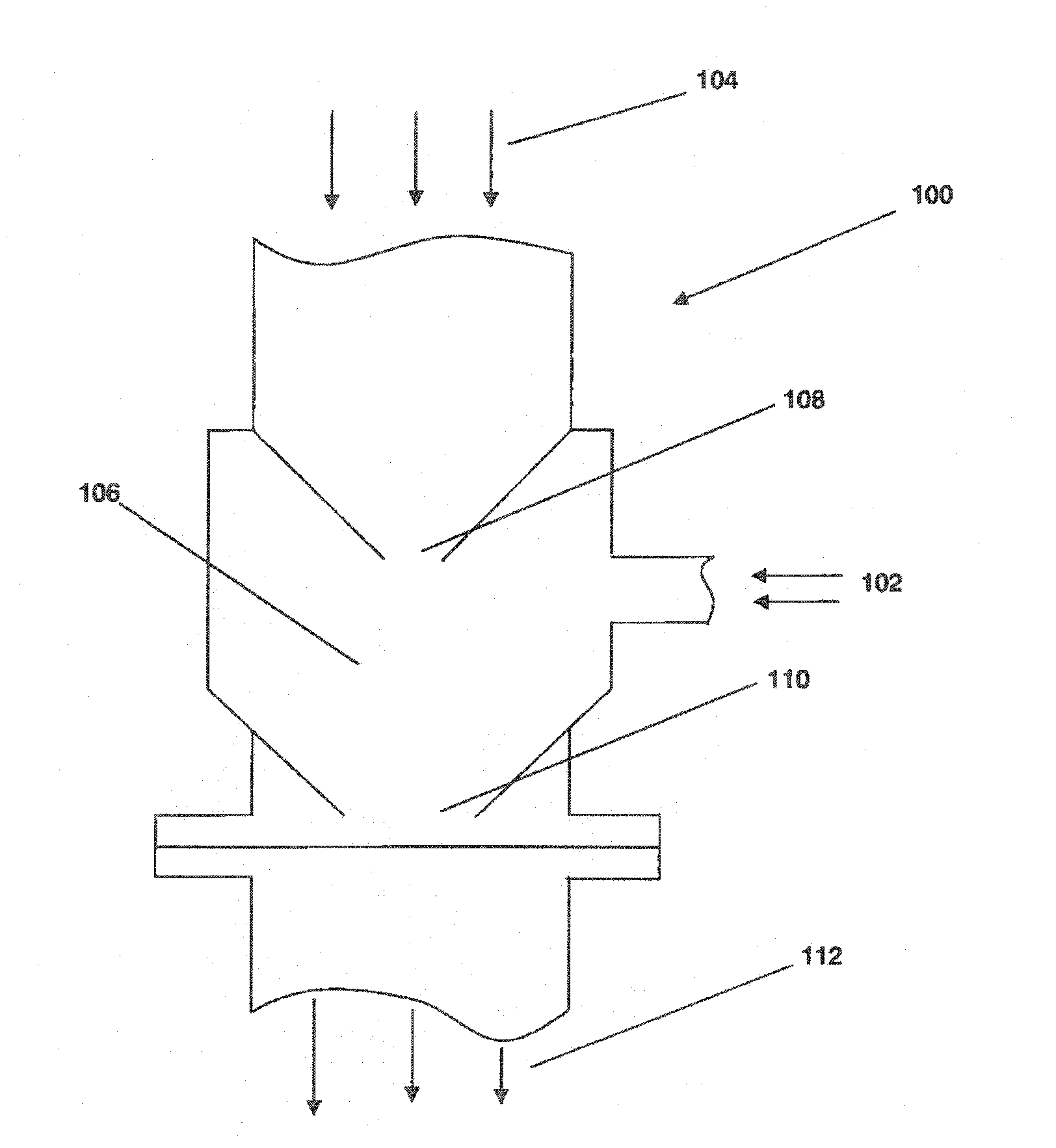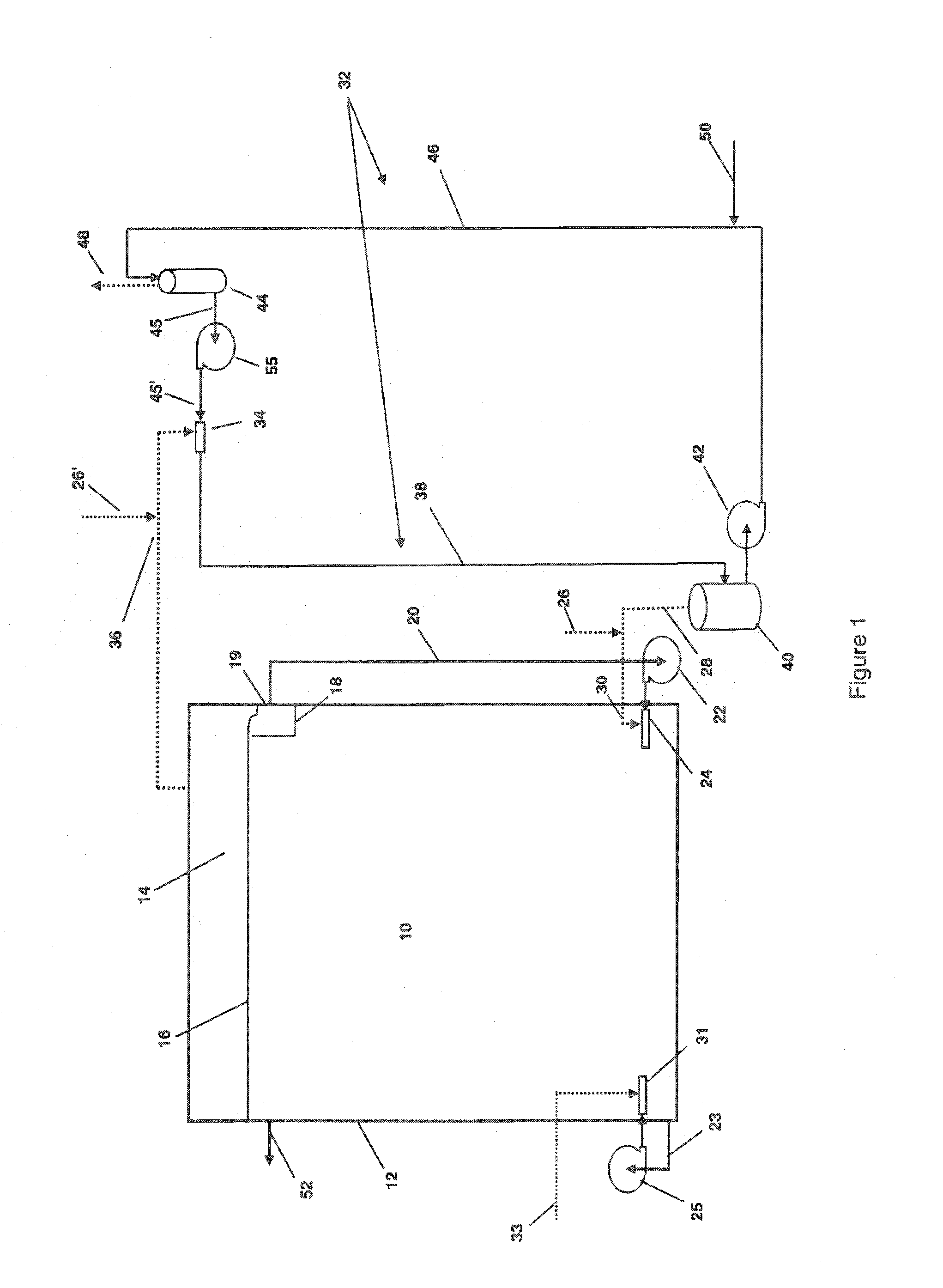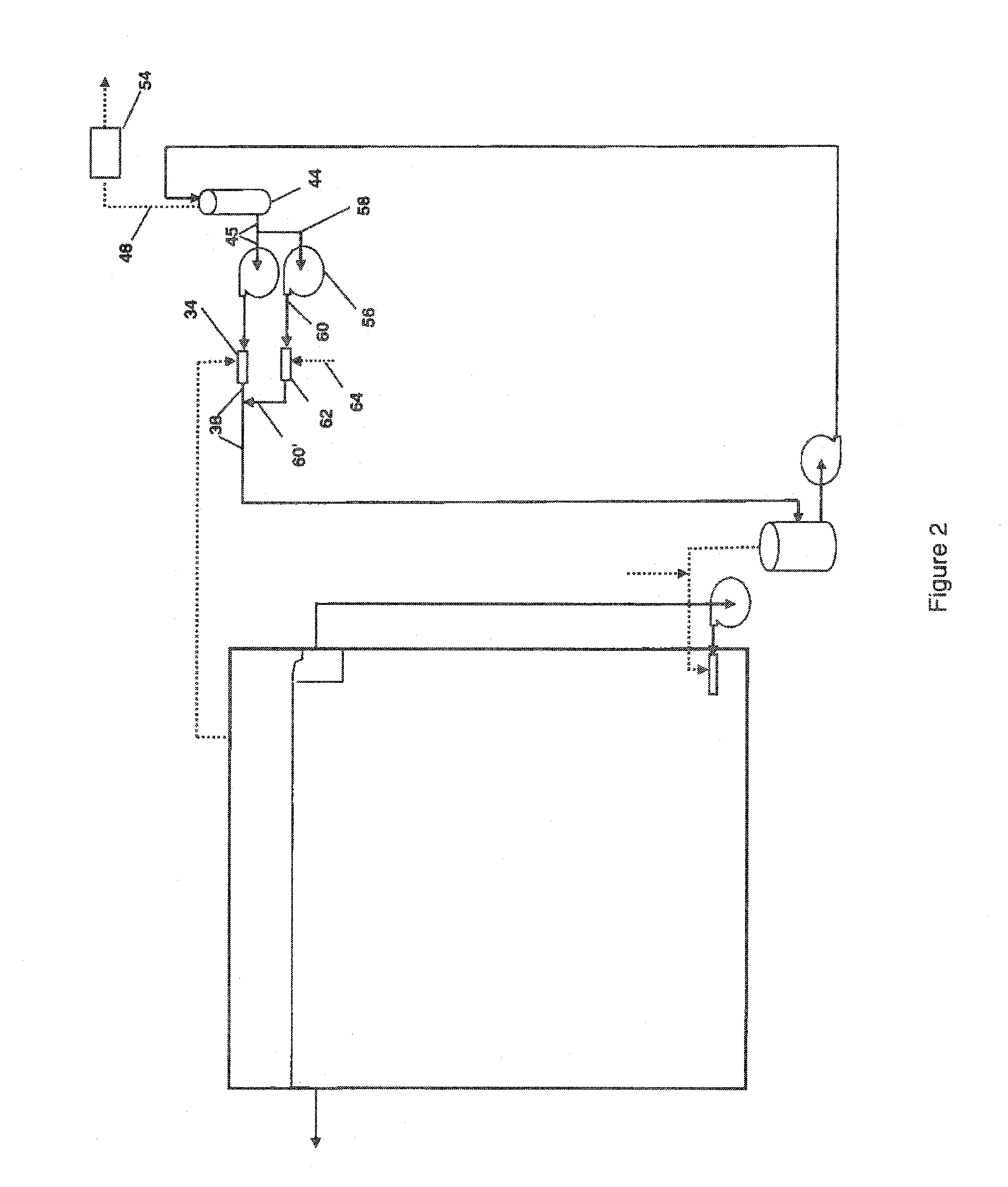Process for Converting a CO and CO2 Feed Gas Stream to Liquid Products by Fermentation
a technology of co and co2 feed gas and liquid product, which is applied in the field of co and co2 control, can solve the problems of large quantities of co and co2 gas, complicating the operation of such systems, and adding to the cost of such operations, and achieves good mass transfer, low solubility of co, and good gas dispersion
- Summary
- Abstract
- Description
- Claims
- Application Information
AI Technical Summary
Benefits of technology
Problems solved by technology
Method used
Image
Examples
example 1
[0063]A 36, m3 fermentor in the form of a fermentation vessel having a 1.05 meter diameter and a 16 meter liquid depth is used as a fermentation vessel for the conversion of carbon monoxide and hydrogen and carbon dioxide into ethanol. The fermentation medium having the composition given in Table 1 is used to fill the fermentor and maintained at about 37° C. The fermentor is maintained under anaerobic conditions.
[0064]The bioreactor system is operated with an active culture of Clostridium ragsdalei ATCC No. BAA-622. The fermentation pH is maintained at a pH in the range of 5.0 to 5.3 to favor ethanol production.
TABLE 1Fermentation Medium CompositionsComponentsAmount per literMineral solution25mlTrace metal solution10mlVitamins solution10mlYeast Extract0.05gAdjust pH with NaOH6.1Reducing agent2.05ml
[0065]A gas input stream having a composition of about 38.6% mole fraction CO, 38.05 mole fraction % H2, 18.2% mole fraction CO2 and 4.7% mole fraction trace and inert gases (N2, CH4 etc.)...
PUM
| Property | Measurement | Unit |
|---|---|---|
| hydrostatic pressure | aaaaa | aaaaa |
| surface tension | aaaaa | aaaaa |
| static pressure head | aaaaa | aaaaa |
Abstract
Description
Claims
Application Information
 Login to View More
Login to View More - R&D Engineer
- R&D Manager
- IP Professional
- Industry Leading Data Capabilities
- Powerful AI technology
- Patent DNA Extraction
Browse by: Latest US Patents, China's latest patents, Technical Efficacy Thesaurus, Application Domain, Technology Topic, Popular Technical Reports.
© 2024 PatSnap. All rights reserved.Legal|Privacy policy|Modern Slavery Act Transparency Statement|Sitemap|About US| Contact US: help@patsnap.com










